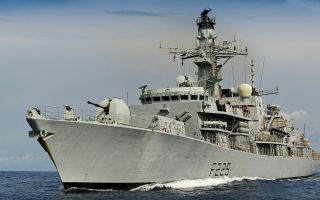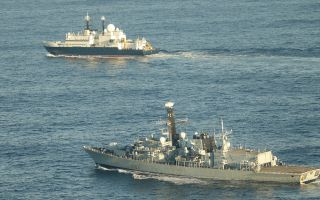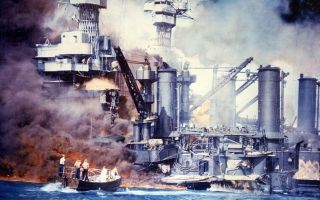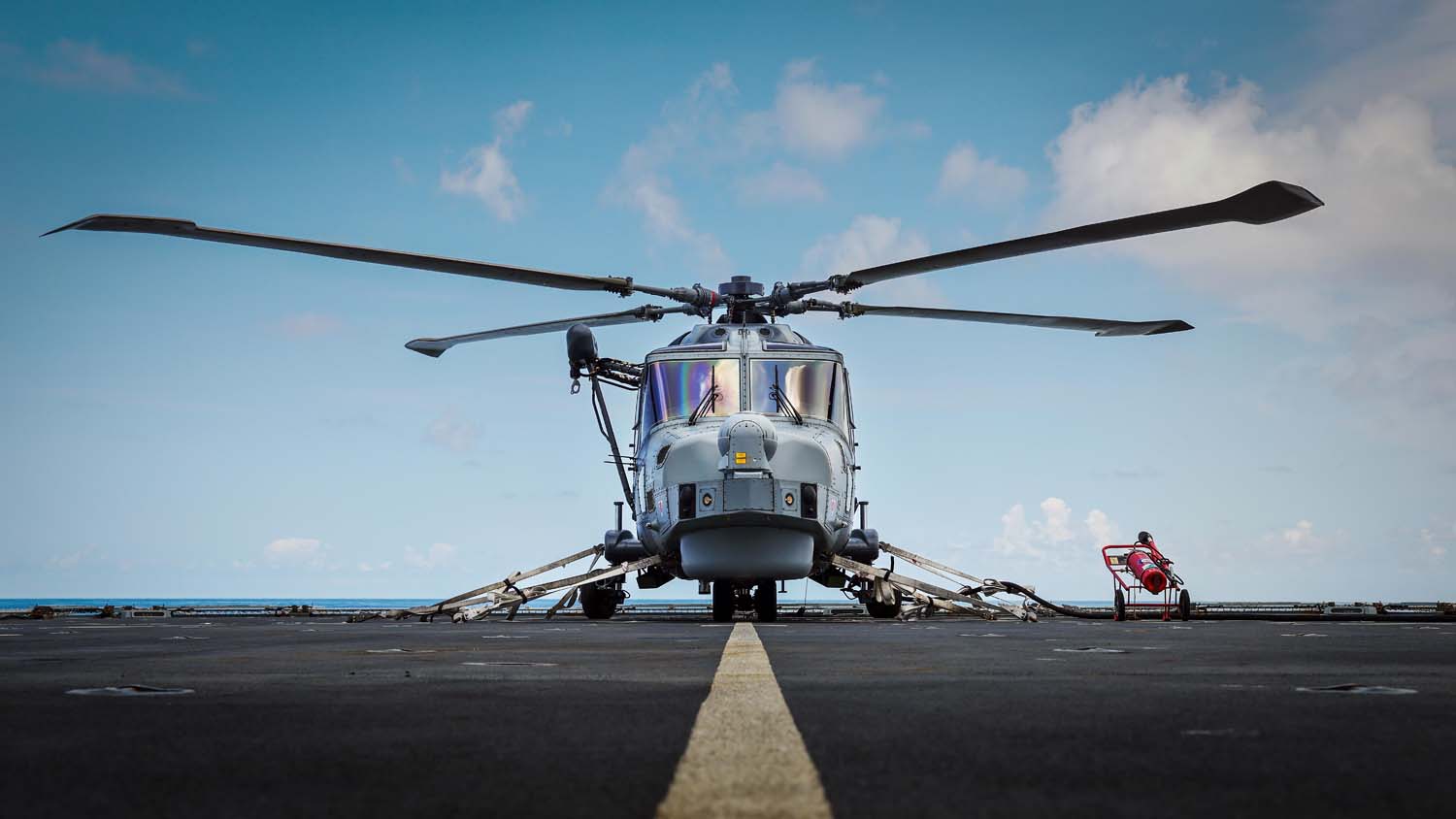
First British aircraft lands on the world's largest warship

A Royal Navy Wildcat helicopter has become the first British aircraft to land on the world's largest warship, the US Navy's USS Gerald R Ford.
Currently stationed in the Mediterranean, the helicopter flew from HMS Duncan, a Type 45 destroyer, onto the enormous flight deck of the US aircraft carrier.
Wildcat Flight Commander Lieutenant Sean Bending said: "As a pilot, it is a real privilege to land on an ally's ship for the first time.
- World's biggest warship USS Gerald R Ford dwarfs ally ships on Nato exercise
- USS Gerald R Ford: On board the world's biggest warship
- HMS Prince of Wales' flight deck 'open for business' after repairs
"The ability to fly our aircraft between the different classes and nationalities of ships is key to allowing us to operate effectively together.
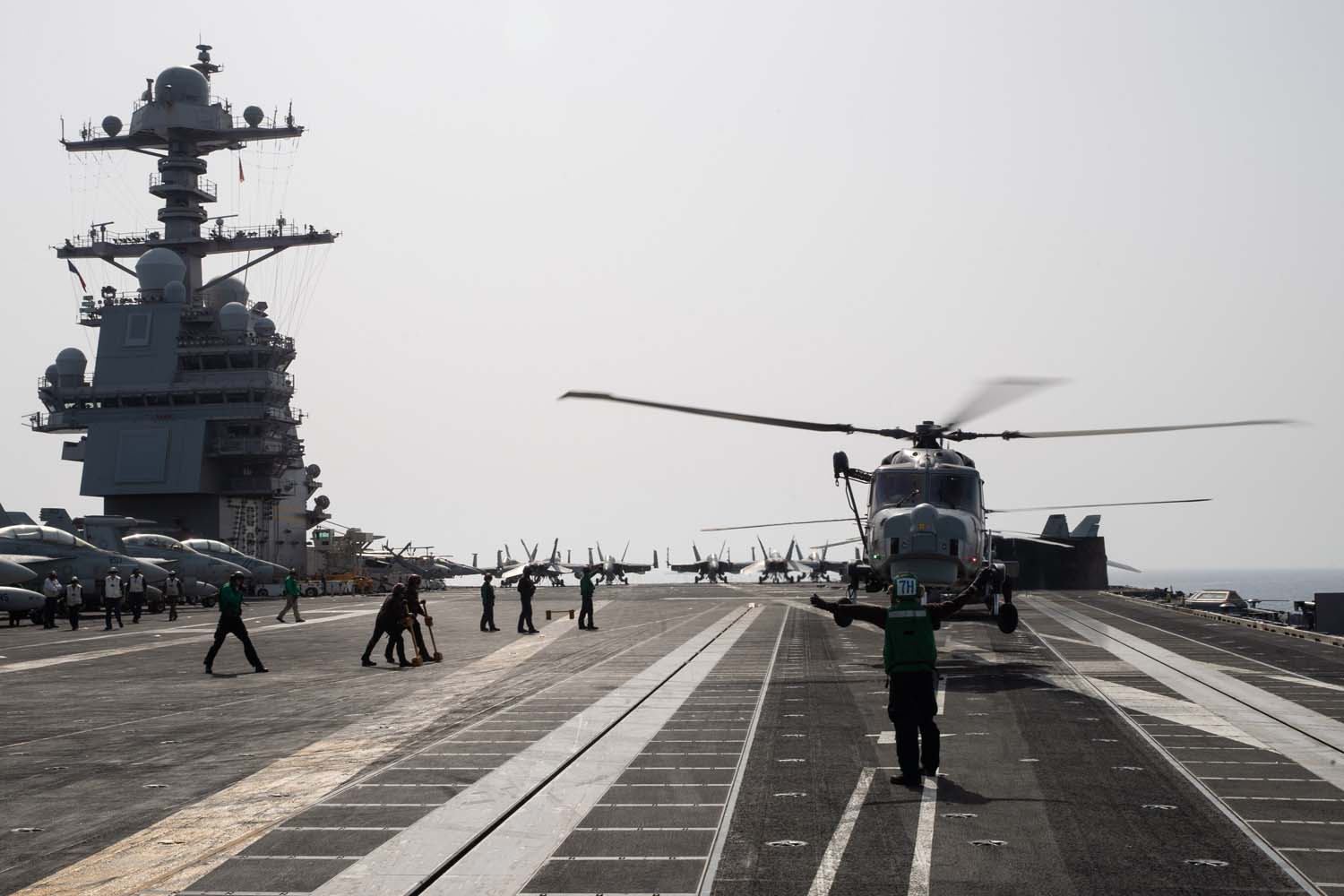
"Flying from the deck of a destroyer to a carrier, there is a huge difference in both size and the number of aircraft and people around.
"It is a truly impressive sight to see that much aviation activity being conducted in one place," Lt Bending said.
Described as a "floating city", the world's biggest warship has 24 decks on board, housing a total crew of 4,539 sailors and aviators.
Weighing a whopping 100,000 tonnes, the USS Gerald R Ford cost around £11.5bn, considerably more than the £3.2bn cost of the Royal Navy flagship HMS Queen Elizabeth.
The USS Gerald R Ford is the first in a new Ford Class which will eventually replace its predecessor, the Nimitz class.
"The Ford class aircraft carriers will be in service for at least 50 years so it was extremely important to demonstrate that we can use their deck," Lt Bending added.
The Wildcat was dispatched to the US aircraft carrier for a planning conference ahead of upcoming joint operations.
HMS Duncan is currently heading the Standing Nato Maritime Group 2 (SNMG2), whose role is to provide Nato with an immediate operational response capability and consists of around four to six destroyers and frigates.
In a historic landing, the Wildcat helicopter transported Royal Navy Commodore Paul Stroude, who commands SNMG2, along with his staff, onto the USS Gerald R Ford.
For the next few months, SNMG2 will be deployed alongside the ships of Carrier Strike Group 12, patrolling the Mediterranean.
"This was a vital opportunity to cement our working relationship and to plan the next period of activity," Cdre Stroude said.


